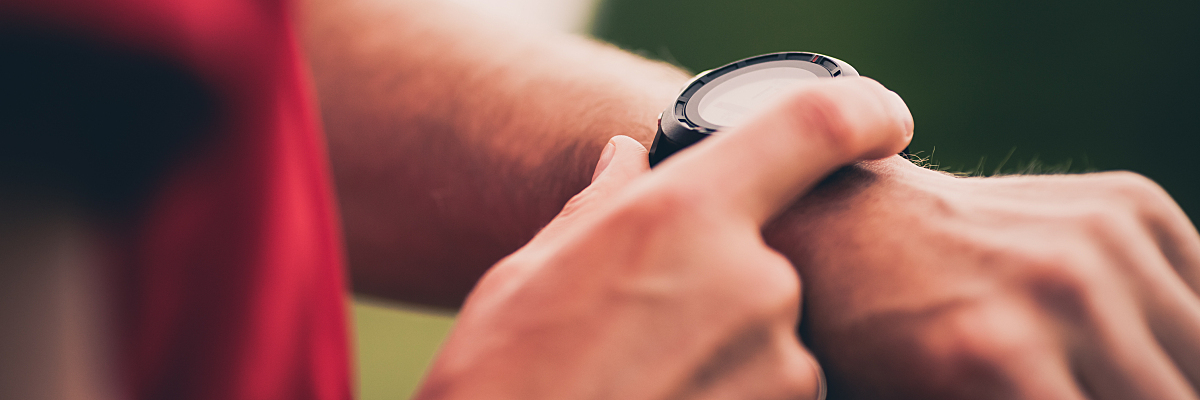In today's tech-driven world, people are increasingly turning to wearable devices to monitor their health. Armed with smart watches, fitness trackers, and even simple phone apps, consumers can now access their health data, including information about their heart rate, from home.
Consumer-focused devices are beneficial for engaging and empowering individuals to actively manage their health. According to a study published in JMIR mHealth and uHealth, commercial wearable devices are accurate for measuring steps and heart rate in laboratory-based settings, but the accuracy varies by manufacturer and device type.1 However, clinical technology, such as the 12-lead ECG, should be the main resource for monitoring and diagnosing, particularly for cardiac patients.
According to an article in Diagnostic and Interventional Cardiology, the first wristwatch featuring ECG came onto the market in 2018.2 The crown and back crystal of the watch contain electrical heart sensors that allow the recording of a single lead ECG similar to lead I on a traditional ECG. These features allow the watch to measure the body's electrical heart impulses. Paired with an ECG app, the watch can record the user's heartbeat and rhythm to provide a result such as sinus rhythm, atrial fibrillation (AFib), low or high heart rate, poor recording, or inconclusive.
The Limitations of Wearable Tech
Wearable tech still has its place in healthcare. Patients can and should use this valuable technology to flag any profoundly abnormal heart rate readings for their healthcare providers, who can investigate these readings via an ECG in a healthcare setting. However, providers may be skeptical of the accuracy of data collected from wearables, according to Fierce Healthcare.3 Not only that, but the lack of interoperability with EHRs also serves as a barrier to physician acceptance and adoption.
Since the release of that first ECG smart watch, several new devices have come to market. These devices have a good track record of detecting serious but treatable cardiac arrhythmias; however, like most technology, for the most accurate data, users should rely on the most accurate equipment.
Information Overload
Many issues related to smart health monitoring stem not from the technology itself but from incorrect assumptions about how to use the data it provides. For instance, these devices may actually provide consumers with too much information about their heart health, prompting consumers to constantly check the device and see if their readings have changed.
Further, patients may take unnecessary actions based on their results. One 70-year-old patient with AFib took more than 900 ECG recordings in one year and became convinced that the smart watch notifications "were a sign of worsening cardiac function," according to a paper published in the journal Cardiovascular Digital Health.4 This caused the patient to worry excessively and regularly seek reassurance from healthcare providers, including going to the emergency department and ambulatory clinic.
Shortcomings of Single-Lead Consumer Watch ECGs
Some consumers may not understand how to interpret results. For example, the authors of the aforementioned paper noted that patients were often upset by harmless readings, such as an elevated heart rate notification from exercise. The paper also noted that irregular or inconclusive data was often misinterpreted as an actual health threat.
If the sensor isn't making good contact with the skin, it's more likely to record inaccurate information. Further, if the device's sensors are dirty or the wrist is sweaty, it can be difficult to detect electrical signals. The user may also forget to rest their arm when taking the measurement, causing false positives or inconclusive results.
Many fitness trackers use photoplethysmography (PPG) to measure heart rate, but more ECG wearables have entered the market in recent years. While single-lead ECGs can monitor basic heart function, they don't offer a full picture of the heart's electrical conduction system, reports The Heart House.5
Ensure More Accurate Readings with a 12-Lead ECG
Heart evaluations using 12-lead ECGs are used across all clinical settings, from primary care to the ICU, where they provide a full evaluation of cardiac electrical activity.
Medical best-practice ECGs have 12 leads: six chest leads that allow cardiologists to "view" the heart in the horizontal plane and six limb leads that allow cardiologists to view the heart in the frontal plane. Together, these readings provide a three-dimensional representation of atrial and ventricular depolarization and repolarization, with the whole procedure usually taking less than 10 minutes. By comparison, a three-lead ECG only shows one limited view of the heart's electrical activity (the vertical view).
Along with top-tier technology, clinicians are a vital part of analyzing the results of ECGs. Interpreting the results of an ECG is performed manually by trained specialists; this is usually a cardiologist, although all doctors have been trained on the basics of reading an ECG. In addition, some clinicians have started using automated algorithms to help interpret ECG results and diagnose heart conduction problems.
A More Accurate Path to Understanding Heart Health
Strange readings from smart watches or fitness trackers may indicate that something is wrong with a person's heart or, those results may be a fluke. That's why devices featuring single-lead technology should only be used to promote conversation between a physician and the consumer. These discussions can help lead patients and their physicians to the gold standard of heart health testing, a 12-lead ECG, which can then provide a robust evaluation of cardiac electrical activity.
Ultimately, a full 12-lead ECG evaluation can lead to life-saving diagnosis and treatment. Patients have more tools than ever to understand their health, but that technology invites new responsibilities for patients and clinicians alike to ensure that the readings from wearable devices work for a patient's health, not against it.
Resources
1. https://www.ncbi.nlm.nih.gov/pmc/articles/PMC7509623/
4. https://www.ncbi.nlm.nih.gov/pmc/articles/PMC8357265/pdf/main.pdf
5. https://www.hearthousenj.com/learning-center/diet-nutrition/wearable-technology-how-accurate-is-it/

